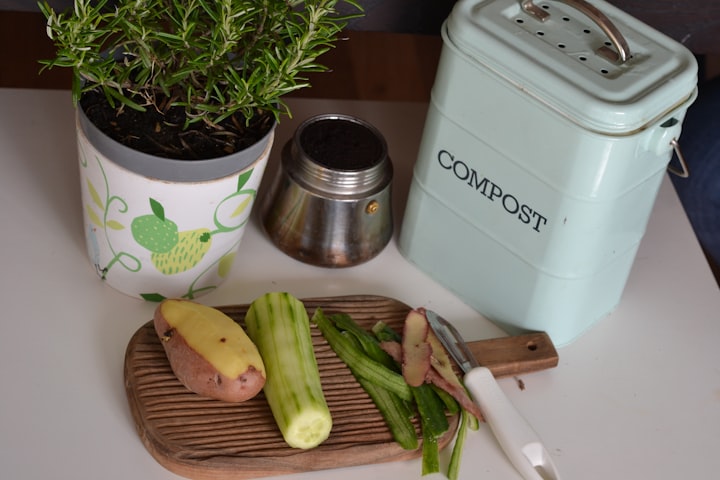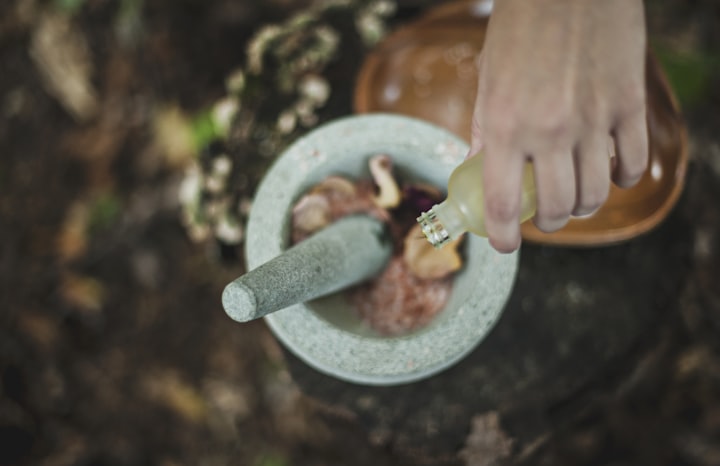
Composting is a great way to reduce your food and garden waste. It works as a fantastic fertiliser for your plants, making it a great way to recycle your waste and be more sustainable at home or even at work.
WHY IS COMPOSTING GOOD FOR THE ENVIRONMENT?
The majority of food waste gets put into landfills which is extremely damaging to the environment.
“If food goes to the landfill and rots, it produces methane—a greenhouse gas even more potent than carbon dioxide. About 6%-8% of all human-caused greenhouse gas emissions could be reduced if we stop wasting food. In the US alone, the production of lost or wasted food generates the equivalent of 32.6 million cars’ worth of greenhouse gas emissions” - World Wide Fund for Nature (WWF).

IS IT WORTH IT?
Yes, composting is a great way to recycle your food and garden waste. When choosing to compost, you are being more effective and sustainable with your waste. You can use your compost to enrich the soil of your plants in your home, at work or in the garden which in turn, reduces plant disease and the need for chemical fertilisers. This use of composting is beneficial for your health as well as your plants.
THE SIMPLEST COMPOSTING SYSTEM
If you are willing to spend a little more money for even more convenience, you can buy an indoor electric food waste bin that automatically turns your food waste into enriching soil without having to leave your kitchen. If you would like a cheaper alternative to composting follow the steps below on how to compost using a plant pot.
STEP BY STEP GUIDE ON COMPOSTING WITH A PLANT POT
Alternatively, a more timely, yet inexpensive way to compost at home is to use a standard garden plant pot.
Step 1. Get a large plant pot that you would normally use for your plants.
Step 2. Put soil in the bottom of the pot, then add in dried leaves on top.
Step 3. Add your food and garden waste such as, vegetables, crushed egg shells or grass. (scroll to the bottom to see more on what you can and can't put into your compost)
Step 4. Each time you fill the pot with food waste add dried leaves on top. This will help it decompose.
Step 5. When the pot is almost filled to the top, add more dried leaves on top and then add soil again.
Step 6. Add water to the pot and set aside somewhere in the sun for 1 month, occasionally filling it with water to keep it moist.
Step 7. After 1 month, you can empty the contents of the pot and you will be left with a nutritious earthy mixture to use for your plants.
You can use your nutritious mixture to top up plant beds or alternatively, you can sprinkle it onto your garden lawn to add nutrition to the grass.
STEP BY STEP GUIDE TO COMPOSTING WITH A TURNING BIN
This is a great alternative if you live in a bigger household or a small workplace. Take a step towards a sustainable future by composting at home or introduce a new way to recycle at work with these simple and easy steps using a turning bin.
Step 1. Create a space in your kitchen or at work for a compost bin or tub.
Step 2. Put up a poster to ensure the correct food is being placed into your compost bin.
Step 3. When the tub or bin is full you can then take this outside to your compost area.
Step 4. Your turning bin should be placed somewhere that catches sunlight. Normally a turning bin will have one or two openings.
One opening: Add in your dried leaves along with your food and garden waste, turning approximately 5 times every few days.
Two openings: Some compost turning bins will allow for you to add your food waste and dried leaves to both sides (same as above). You can fill one door first with your waste and then whilst this one is producing your compost you can begin to fill the second side, making it more efficient for continuous use.
WHAT TO PUT IN YOUR COMPOST
You can put in your grass and plant cuttings, tea and coffee granules, raw food and vegetable trimmings, crushed eggshells, shredded paper, straw and hay, animal bedding and sawdust, hair and fur, leaves.
WHAT NOT TO PUT IN YOUR COMPOST
Do not put in your compost any cooked foods, dairy products, meat or fish, coloured or treated paper, coal and ash, cat litter and dog feces, chemically treated wood, diseased plants, persistent weeds.
About the Creator
Lem Media
I am a writer and videographer with a passion for wellbeing, wildlife and sustainability.
I love to travel and learn about different cultures. Diversity in humans is a creative tool to move towards a better tomorrow.





Comments
There are no comments for this story
Be the first to respond and start the conversation.